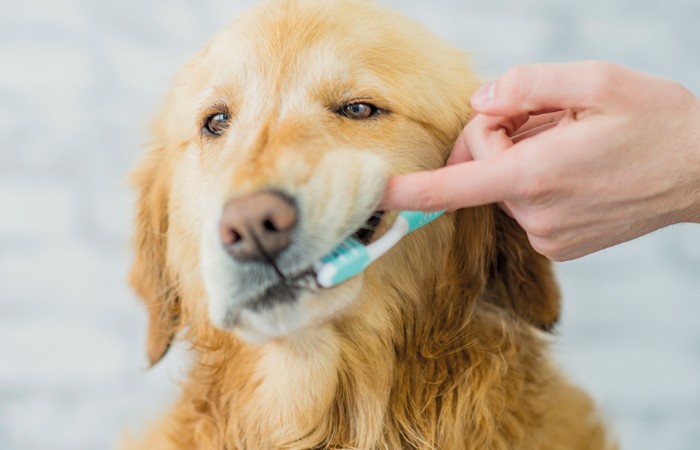OTC Category Reviews 
Pet hates
In OTC Category Reviews
Follow month by month updates on topics including asthma, mental health and skin conditions and be able to provide informed advice to customers at the counter.Bookmark
Whether human or hound, being under the weather is far from fun. Pharmacy teams can offer pet owners support and advice to get their furry friends back on their feet, as well as protecting them from further distress
The UK population continues to love its pets, with 49 per cent of UK adults owning a pet, according to the People’s Dispensary for Sick Animals (PDSA). This totals 11.1 million cats, 8.9 million dogs and one million rabbits – that’s a lot of furry friends to keep fit and healthy. The latest PDSA Animal Welfare (PAW) report reveals that many pet health problems are entirely preventable and the state of pets’ health and wellbeing within the UK could be greatly improved.

While all pets should have an annual check up with a vet and receive all the necessary booster vaccinations, they also need ongoing care and attention, some of which can be achieved at home. Pharmacy teams are ideally placed to provide advice.
Get into the groom
Different pets need different grooming routines, which all depends on the pet’s species, breed, fur length and texture and overall health. For example, some pets shouldn’t be bathed at all, while others may need an occasional wash with a pet-safe shampoo. Cats don’t need to be washed unless they’ve rolled in something potentially harmful, and rabbits only need a wash, with a damp cloth, if very dirty.
Long-haired breeds of cats, dogs and rabbits may need daily or near-daily brushing to keep fur healthy. Medium and short-haired breeds may just need an extra brush once or twice a week. Some dogs may need their coats trimmed or undercoats stripped several times a year.
Dogs usually wear their nails down naturally but some may need clipping, especially if they don’t walk much on tarmac, have very bowed legs or have reduced mobility. Cats should keep their claws at a good length if they have a scratching post, but may need a trim if their mobility is reduced. Rabbit nails may need to be clipped occasionally. Pet owners should use pet nail clippers, rather than human ones, or take their pet to a groomer or vet.
Some pet owners prefer to use a professional groomer, while others may be confident enough to do it themselves. “If your pet does need regular or more complicated grooming, you may prefer to use a professional pet groomer,” says Olivia Anderson-Nathan, PDSA vet. “But there’s no reason why you can’t learn to do some of the simpler elements at home, as long as you use safe equipment and take care with sharp objects.”
Grooming provides an ideal time to spot signs of illness, wounds or sore patches, as well as parasites such as ticks or fleas. Pet’s coats should be naturally shiny and healthy; if their coat is becoming unkempt, this could be an early sign of illness. Customers can check to make sure their pet isn’t unusually dirty, smelly or itchy, remembering to check behind the ears – an area often missed.
Pets over-grooming can also highlight health issues. “Excessive self-grooming usually means that your pet has itchy skin and is licking or scratching to try and relieve the itch,” says Olivia. “This can be a sign of several health problems, which range from fleas to allergies. Over-grooming can often be exacerbated by stress or anxiety. If your pet is showing this sign, it’s a good idea to get them checked out by a vet.”

Open wide
Preventative dental healthcare for pets is essential and ideally should be started when a pet is young. Pet owners need to use pet-safe toothpastes, never human products, alongside a pet toothbrush, finger brush or microfibre cloth designed for tooth cleaning.
“It’s best to build up to toothbrushing gradually,” says Olivia. “Start by introducing them to the smell and taste of the toothpaste by letting them lick some off your finger. Once they’re happy with that, let them lick some off the toothbrush. Next, practice touching their cheeks while they lick the toothpaste, if they’re not crazy about the taste, you might need to use a treat instead. Once they’re letting you touch their face without shying away, start to gently lift their lips up to reveal the teeth at the back of their mouth.”
Feeding a pet the right diet can help to keep the mouth healthy. A vet can recommend specially-formulated feed designed to stop the build-up of plaque. Teeth-cleaning treats are also available, but these should be used only occasionally as they can lead to weight gain. If a pet appears to be in pain, or gums look sore and/or bleed, it’s important to get them checked out by a vet.

Sun safety
Each summer, the PDSA urges owners to keep their pets safe in the sun and heat. “Bear in mind on a hot day that dogs can’t control their body temperature the way we can,” says Olivia. “They are wearing a fur coat. And as they only have sweat glands in their paws they mainly cool down through panting, which isn’t very effective. One of the most dangerous causes of heatstroke or hyperthermia is leaving pets inside a vehicle during warm or hot weather. But leaving them in the garden for too long without shade, or taking them for a walk during the hottest part of the day, can also be very dangerous.”
Excessive sun exposure can cause sunburn and skin cancer in some pets. Pet owners should use a pet-safe sun cream recommended by a vet, especially on pets with white or thin fur, focusing on the nose and ears. If owners see unexplained sores or ulcers on their pets’ skin, or any new lumps, they should see a vet urgently.
Pets should be given products suitable for their species, as some dog flea treatments are highly toxic to cats
Pet first aid
Many owners aren’t aware of simple steps they can take to help stabilise a pet in an emergency situation. The PDSA runs several pet first aid courses, teaching skills such as pet CPR, bandaging and what to do if a pet suffers a seizure. The charity also produces a pet first aid guide, focusing on scenarios including a road traffic accident and poisoning, available on the PDSA website.
“Even though it’s something you hope will never happen, it’s best to be proactive,” says Olivia. “Keeping a first aid kit in the car and in the bathroom cupboard and brushing up on the basics can make a real difference should an accident happen. Knowing your ABCs for animals – airway, breathing and circulation – can help you to assess your pet if they collapse and give CPR if necessary.”
All pet injuries, beyond a simple graze or cut, should be seen by a vet, but owners can stem bleeding using firm pressure or a temporary bandage. “Human or veterinary bandages are both fine to use,” Olivia says. “The important thing is that you know how to apply these correctly as an incorrectly applied bandage can do more harm than good if it’s too tight, and may simply fall off if it’s too loose. There are also some situations where a first aid bandage isn’t the right choice. For example, you should never bandage a leg you think is broken.”
Pet owners shouldn’t use human antiseptic products as these can be harmful. “Many human antiseptics are stingy and unpleasant for pets,” she says. “They can also actually slow down wound healing if they are used at the wrong time or if they’re too strong. I recommend having a pet first aid kit stocked with sterile saline and gauze swabs to gently clean any wounds, as this will have the least chance of doing damage. If this isn’t available, the next best option is boiled, then cooled water with a pinch of salt.”
Beat the parasites
Fleas
Fleas are tiny parasitic insects that feed on their host’s blood. They are particularly active in the summer but can occur all year round.
Symptoms: Scratching; bald or sore patches; redness or irritation; smelly, infected skin; tiny dark flecks in the fur; and areas of thickened skin, especially around the ears.
Prevention/treatment: Comb pets with a fine-toothed comb to check for fleas. Regularly using spot-on treatments, applied to the back of the pet’s neck, on all household pets will prevent an infestation as well as treat one. Pets should be given products suitable for their species, as some dog flea treatments are highly toxic to cats. Around 95 per cent of fleas and their eggs live in the environment, and fleas can survive without a host for several months. Cleaning bedding and vacuuming carpets, soft furnishings, furniture, skirting boards and floors regularly is important.
Ticks
Ticks are spider-like, blood-sucking parasites. Pets can pick up ticks anywhere there’s vegetation, including parks, woodlands and even back gardens.
Symptoms: Ticks are hard to spot. They are usually the size of a sesame seed and can feel like a bump on the skin. They can spread diseases, such as Lyme disease to pets and humans and the malaria-like babesiosis to dogs.
Prevention/treatment: Check pets for ticks regularly, especially where fur is thinner, such as the tummy, head and ears. Remove ticks with a tick remover as soon as they’re found. Squeezing or pulling ticks can spread disease, so they should be twisted off instead. Some spot-on flea treatments can prevents ticks too – read the instructions carefully, as dog-only products can be toxic to cats.
Worms
Worms live in the digestive tract and can be harmful to pets and people. They can be picked up anywhere by pets – even just by sniffing or licking the ground.
Symptoms: Most healthy pets don’t show signs of an infection. But they may have an increased or decreased appetite, diarrhoea or vomiting, weight loss, excessive bottom cleaning or a bloated tummy. An untreated infection can be serious for pets and humans, especially children, pregnant women or older people.
Prevention/treatment: Pets should be given a regular de-worming treatment, usually at least every three months, although a vet can advise on exactly how often is necessary. An effective flea treatment should prevent tapeworms as well. Practise good hygiene, such as washing hands straight after handling a pet and before handling food, and pick up faeces immediately to avoid spreading worms.
Sponsored
 Sponsored education
Sponsored education
The role of nasal cleansing in protecting against colds and flu
Learning for the pharmacy team
 Sponsored education
Sponsored education
Challenge your thinking on warts and verrucas
Discover different treatment options for warts and verruas and when to recommend them to your customers, based on their individual needs

Record my learning outcomes